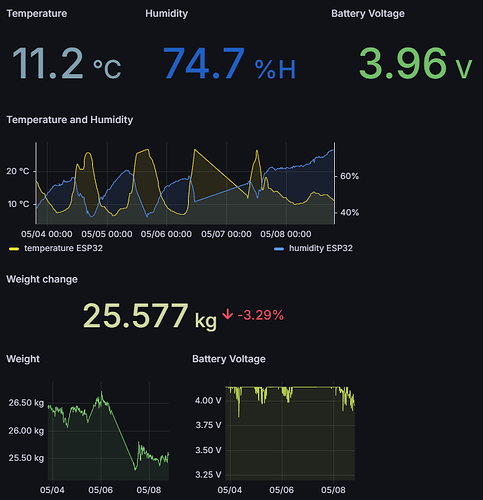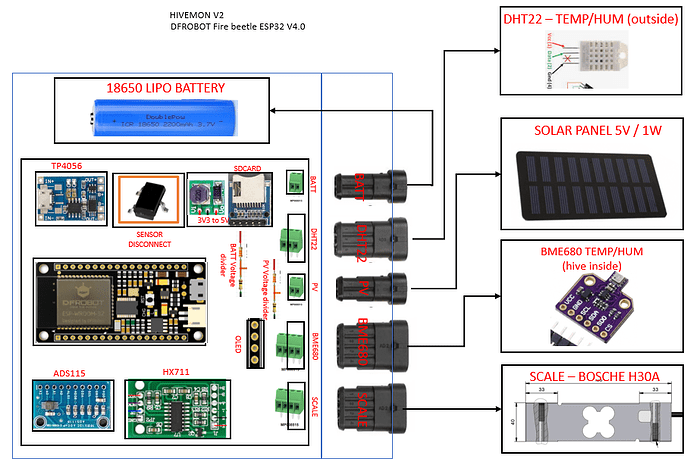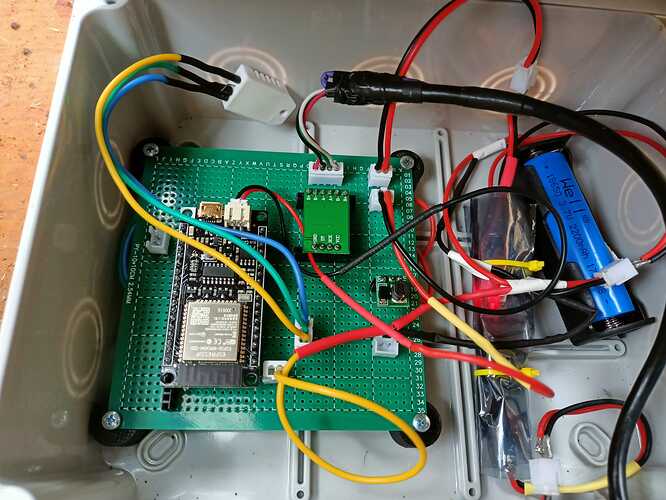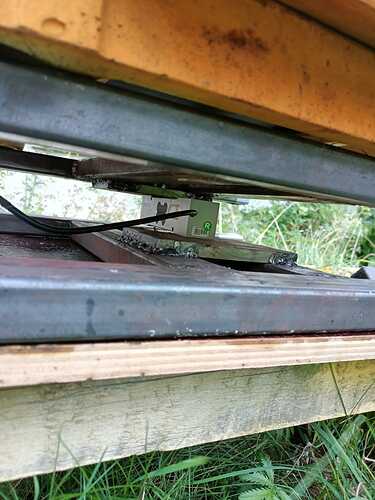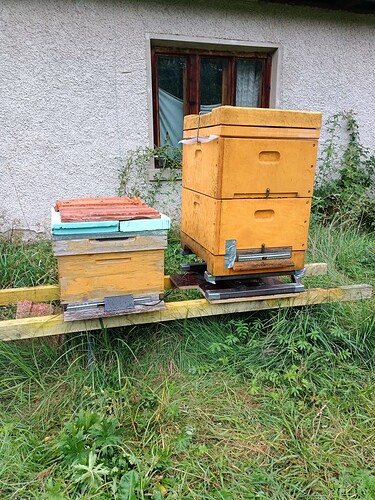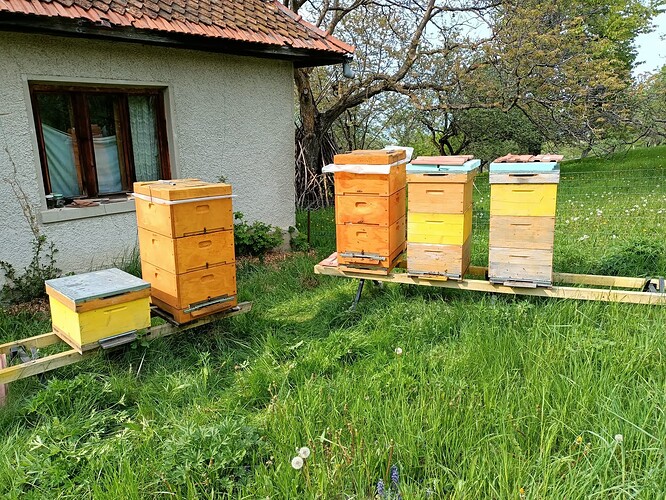Hello,
Thank you for accepting me to the forum.
My name is Octavian Ureche, I’m from Brasov, central Romania.
I’m a beekeeper myself, also my father is, but because of his age I’m attending the hives now.
I was contempling of buiding a bee hive monitor for several years. I had limited electronics knowledge and no programming skills. Of course I started with an Arduino R3 board by adding sensors. I understood that the Hive sensor needed to be a low power device, arduino is not such thing.
I spent time doing a lot of learning and a lot of research on the internet - this is how I found “The Hiveeyes Project”.
Currently I built one “sensor node” (Hivemon V1), is deployed and it is sending data from last autumn.
The device is hybrid powered solar/battery, measured data visualization is done on pc or mobile.
Measured data: hive weight, outside temperature & humidity, battery voltage
Data read at each 15 minutes and then ESP32 sleep
Hardware details (Hivemon V1):
- ESP32 Firebeetle - low power
- HX711 scale driver + BOSCHE HW30 load cell
- DHT22 sensor
- Solar panel 1W / 5Volts + 18650 2200mAh LiPo + TP4056 solar charger module
Data communication / visualization: Sensor read > ESP32 WIFI > InfluxDB > Grafana
For the actual loadcell support (scale) I use the “double H” model I saw on the “Hiveeyes”. I hope it is ok to use it.
Hivemon V1 (details in the picture below) is a prototype I built just to see if it actually works, and to verify if it can be deployed a a long time (at least several months) without changing the battery.
I had also some issues, sensor sending data intermitently, the wifi signal from my router was not strong enough, so I had to install a range extender. No problems since.
Basically it can send data for up to 6 days without charging the battery.
I’m planning an upgraded version of the sensor. It will include a sensors on/off switch (with a Mosfet) and a BME680 sensor to be installed inside the hive.
Below are a few pictures of my bees and the HivemonV1 sensor installed, and the grafana dashboard.
I’ll be happy to share more pictures, currently there is a limitation for new users.
The work on this sensor was a learning journey for me and to see the first measurements on Grafana was a dream come true.
Actually reading through the forum and looking at the nice Grafana dashboards, make up my mind to really finish this project (it is nor really finishes but it works ![]() ).
).
Thank you for sharing and spreading the knowledge.
Sorry for the long post.
If there are any questions regarding the build or bees & beekeeping, I’ll be glad to answer.
Bst wishes,
Octavian
